‘We are fond of tracing the resemblance between Poetry and Painting,’ wrote William Wordsworth (1770–1850) in the famous ‘Preface’ to Lyrical Ballads (1800), ‘and, accordingly, we call them Sisters.’ To speak of the ‘sister arts’ was indeed a critical platitude of the age, though as it happens Wordsworth’s attitude towards painting wasn’t normally very sisterly. When, in 1840 or so, a well-meaning houseguest called Margaret Gillies made a drawing of the 70-year old Mrs Wordsworth, everyone agreed that it was an excellent likeness; but her kind act was rewarded with a testy and somewhat ungracious sonnet from the sitter’s husband. He preferred to visualise Mary in her salad days: ‘’tis a fruitless task to paint for me, / Who, yielding not to changes Time has made, / By the habitual light of memory see / Eyes unbedimmed, see bloom that cannot fade, / And smiles that from their birth-place ne’er shall flee / Into the land where ghosts and phantoms be’. An oddly misjudged piece of gallantry perhaps, and certainly not one of his greatest poems; but Wordsworth felt strongly about it, telling his daughter that he had ‘never poured out anything more truly from the heart’, and his intensity was doubtless due not only to his feelings about his elderly wife (they were the same age) but also to his instinctive misgiving about pictures. The sonnet ends with Wordsworth telling the luckless Miss Gillies that she lacks ‘that inward eye’ which she would require to produce art which could ‘the visual powers of Nature satisfy’. All she possesses, as a painter, is the outward eye: ‘that inward eye’ is the poet’s hallmark, as of course Miss Gillies would have known from Wordsworth’s most famous poem, the one about the daffodils – ‘They flash upon that inward eye / Which is the bliss of solitude’. By chance we know (because Wordsworth left it on record, saying they were the best thing in the poem) that those two lines were actually contributed by Mary, so the uxoriousness of the thing is double: not only does she evade the merely visual but she also possesses the innate genius to be able to name the imaginative power that so transcends it.
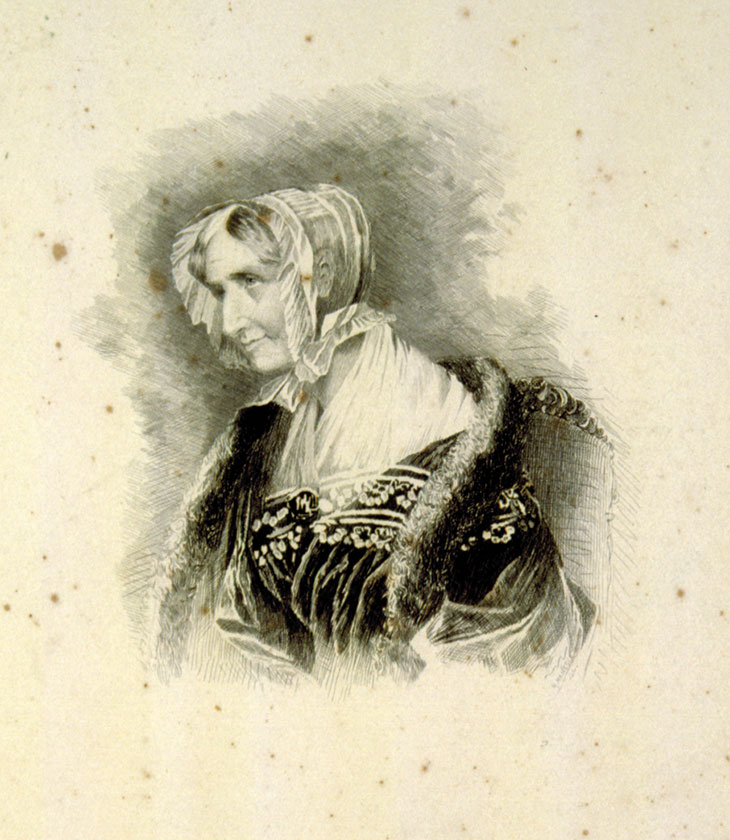
Mary Wordsworth (n.d.), engraving after a portrait (drawing?) of 1839 by Margaret Gillies. Wordsworth Trust, Grasmere
When painting gets a bad press in Wordsworth it is usually because he associates it, not with portraiture, but with the conventions of picturesque landscape. He said it traduced the Alps to apply the term ‘picturesque’ to them and so attempt to bring them under ‘the cold rules of painting’; and in his autobiography The Prelude, he self-reproachfully remembered a time when he had himself briefly fallen under the spell of William Gilpin and other connoisseurs of the picturesque mode, ‘even in pleasure pleas’d / Unworthily, disliking here, and there, / Liking, by rules of mimic art transferr’d / To things above all art’. ‘Art’ is not normally a Good Thing in Wordsworth, who tended to prefer ‘Nature’ or ‘Imagination’ as objects of reverence, and there is frequently a slightly awkward note when he does feel obliged to invoke it honorifically. He once wrote a kindly sonnet of fellow feeling to his friend Benjamin Robert Haydon, a really heroic figure if a second-string painter, which began ‘High is our calling, Friend! – Creative Art / (Whether the instrument of words she use, / Or pencil pregnant with ethereal hues)’ but you can feel the strain in the rather dutiful pomp (did you say ‘pregnant with ethereal hues’?). When, years later, Wordsworth wrote another sonnet praising one of Haydon’s works, an imaginary portrait of Napoleon on St Helena, he began with the curious disclaimer that he wasn’t going to talk about anything to do with the picture as a picture at all – ‘Haydon! let worthier judges praise the skill / Here by thy pencil shown in truth of lines / And charm of colours’ – but rather dwell on the idea of the historical Napoleon contemplating his own downfall which the painting provoked: it is such ‘signs / Of thought, that give the true poetic thrill’, he says. Wordsworth describes the picture assiduously enough, but the real thrill is unpictureable. ‘I cannot paint / What then I was’, says Wordsworth of his own boyhood in ‘Tintern Abbey’, which is not really a profession of his own inadequacy but rather of the inadequacy of painting, just as in the ‘spots of time’ in The Prelude, a series of vivid episodes recollected from his solitary childhood, it is part of the quality of the experience that you could never hope to capture it on a canvas. In this one, for example, the boy has got lost in the gusty Cumberland hills, and as he begins to panic he clocks a beacon on a nearby hilltop and a moorland pond, and then suddenly bumps into a young woman engaged in the wholly humdrum activity of carrying home a pitcher of water.
It was, in truth,
An ordinary sight; but I should need
Colours and words that are unknown to man
To paint the visionary dreariness
Which, while I look’d all round for my lost guide,
Did at that time invest the naked Pool,
The Beacon on the lonely Eminence,
The Woman, and her garments vex’d and toss’d
By the strong wind.
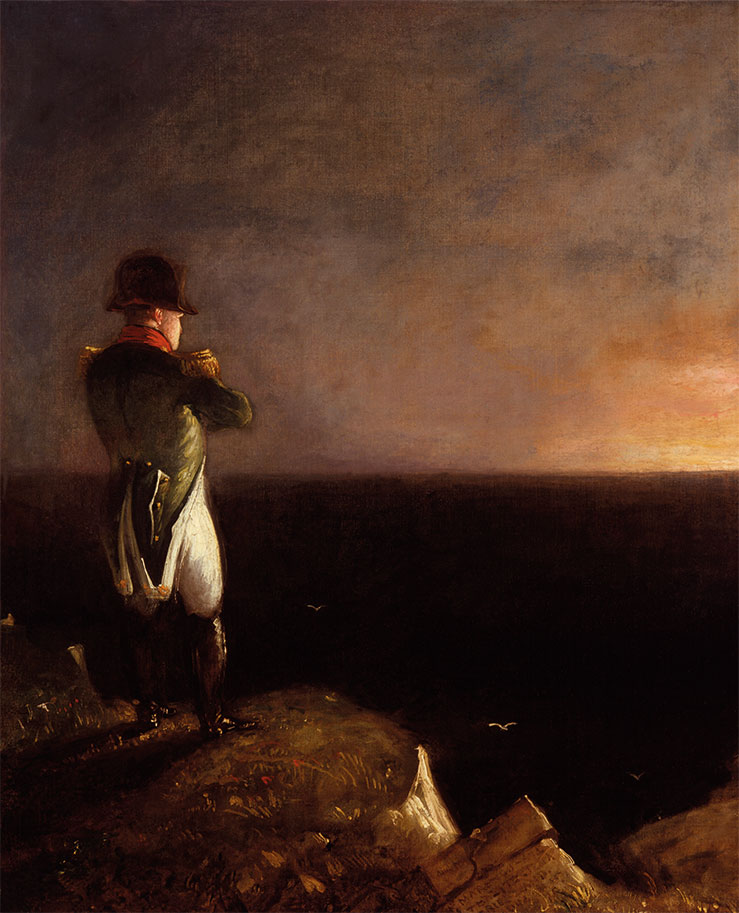
Napoléon Bonaparte (before 1846, based on a version of 1830; this, or another version, seen by Wordsworth), Benjamin Robert Haydon. National Portrait Gallery, London
When, around the same time as Miss Gillies took Mary Wordsworth’s likeness, Haydon conceived the idea of painting Wordsworth, head sunk in deep thought on the slopes of Helvellyn, he was astute enough to soothe the anxieties his prospective sitter might have had. What he had in mind, Wordsworth reported approvingly to a friend, was ‘a likeness of me, not a mere matter-of-fact portrait, but one of a poetical character’. It certainly impressed Elizabeth Barrett Browning who added yet another sonnet to the pile in response to seeing it, and drew the right moral: ‘No portrait this, with Academic air! / This is the poet and his poetry’.
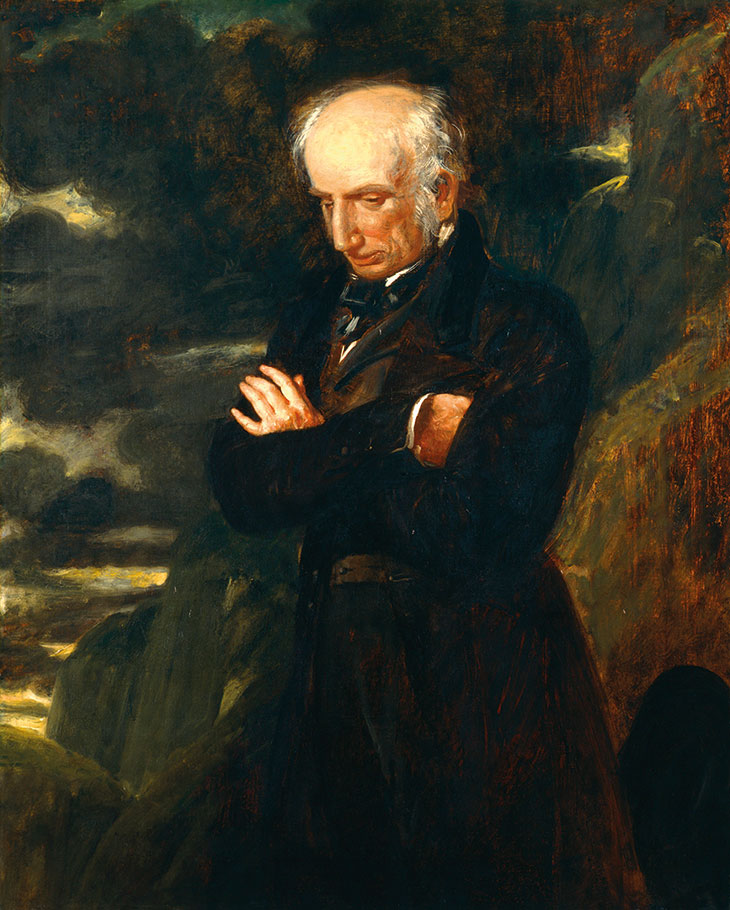
William Wordsworth (1842), Benjamin Robert Haydon. National Portrait Gallery, London
Still, even though he claimed in The Prelude to have shaken off the picturesque like a bad cold, a number of scholars have pointed out that Wordsworth’s early verse often showed markedly picturesque habits, so that the poetry is less a representation of nature than a guided tour. ‘Beyond, along the vista of a brook, / Where antique roots its bustling path o’erlook, / The eye reposes on a secret bridge / Half grey, half shagged with ivy to its ridge’: those lines from an apprentice piece called An Evening Walk lead the eye through the beauties of the scene like a landscape by Gilpin. Wordsworth didn’t keep to those habits for very long, though he would continue often to take as his subjects things that picturesque painters favoured – as Edward Ferrars disapprovingly lists them in Sense and Sensibility, ‘crooked, twisted, blasted trees’, ‘ruined, tattered cottages’, and ‘heath blossoms’. William Hazlitt, himself a talented artist, thought this aspect of Wordsworth made him a bit like Rembrandt, ‘who, more than any other painter’, as he put it, ‘created the medium through which he saw nature, and out of the stump of an old tree, a break in the sky, and a bit of water, could produce an effect almost miraculous’. Hazlitt reported that Wordsworth himself once suggested the analogy with Rembrandt, adding rather cattily that ‘in pronouncing Rembrandt to be a man of genius, [he] feels that he strengthens his own claim to the title’. The artist who might seem closest to Wordsworth is Constable, who famously found his art (as he said) ‘under every hedge and in every lane’; but although the two men met on a number of occasions, and Constable privately expressed his admiration for some of the descriptions in The Excursion, Wordsworth seems to have shown no interest in his contemporary’s work.
The principle reason that painting continued to loom large in his thoughts, however, was contingent. In 1803 Sir George Beaumont, patron, landscape painter, later the effective founder of the National Gallery, and all-round arbiter of taste – the watercolourist Thomas Hearne called him the ‘supreme Dictator on Works of Art’ – had run into Coleridge in the Lake District while on a painting tour. Coleridge impressed him to be sure, but he was most profoundly struck by Coleridge’s friend from Grasmere to whom he was introduced – ‘he has a mind truly poetical’, Beaumont shortly wrote to a friend, ‘& will I am sure produce something “which will not die”’; their friendship quickly deepened and within a year Wordsworth was signing off letters ‘with the sincerest love and affection for you and Lady Beaumont’. Beaumont was a talented amateur painter and a passionate admirer of Sir Joshua Reynolds, whom Wordsworth had cited innocuously in passing in the ‘Preface’ to Lyrical Ballads, something which no doubt helped their relationship along. Beaumont presented Wordsworth with Reynolds’s complete writings, which the poet read with due diligence, confessing that he had never had ‘an opportunity of studying any pictures whatsoever’, but nevertheless praising them in his thank-you letter for ‘sound judgment universally displayed’. He regretted that Reynolds had wasted so much time doing portraits, a view with which Beaumont evidently took issue since Wordsworth’s next letter returned to soften the criticism a little and instead lament more sympathetically Reynolds’s ‘sacrifice of great things to little ones’.
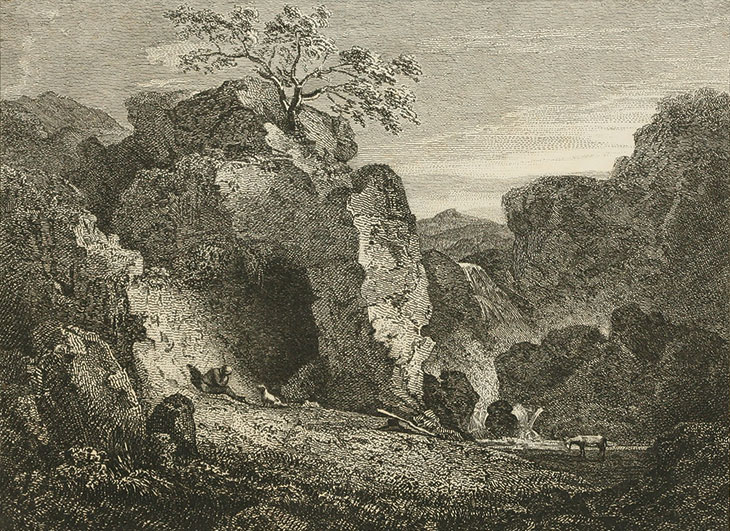
Frontispiece designed by George Howland Beaumont for Peter Bell: A Tale in Verse by William Wordsworth (London, 1819)
Anyway, Beaumont was soon proving a generous and imaginative patron, having the Wordsworths stay for a protracted visit to his country house at Coleorton in Leicestershire, where Wordsworth recited The Prelude and advised on the design of the gardens; and he was also keen on creative collaboration. Beaumont made paintings to illustrate several of Wordsworth’s poems, including ‘Lucy Gray’, ‘Peter Bell’, ‘The White Doe’, and ‘The Thorn’, engravings of several of which illustrated and rendered yet more handsome Wordsworth’s two-volume collected shorter poems of 1815, the summation of his career as a lyric poet. The dedication to the edition was to Beaumont, ‘hoping that this Work, with the embellishments it has received from your Pencil, may survive as a lasting memorial of a friendship, which I reckon among the blessings of my life’. When Beaumont piously installed an urn in his gardens in memory of Reynolds he commissioned Wordsworth to write the inscription, which he did from Beaumont’s point of view: ‘Hence, on my patrimonial grounds, have I / Raised this frail tribute to his memory; / From youth a zealous follower of the Art / That he professed’. Henry Crabb Robinson was quite right to say that the lines were ‘not very characteristic’, and their whole-hearted praise of ‘Art’ gives the game away; but Wordsworth clearly admired Beaumont greatly and wrote some poems about some of his pictures, and I suppose you are not quite on oath when praising the judgment of your generous patron. ‘Praised be the Art whose subtle power could stay / Yon cloud, and fix it in that glorious shape’, begins ‘Upon the Sight of a Beautiful Picture, Painted by Sir G. H. Beaumont, Bart.’, not very promisingly. Still, it was a picture of Beaumont’s, of Peele Castle in a storm, that served as the occasion for one of Wordsworth’s greatest masterpieces, ‘Elegiac Stanzas’, a poem about the death of John Wordsworth, the poet’s brother, who had drowned off Portland Bill. ‘And this huge Castle, standing here sublime, / I love to see the look with which it braves, / Cased in the unfeeling armour of old time, / The lightning, the fierce wind, and trampling waves’.
You could not say Wordsworth’s poem was really about Beaumont’s picture. For much of it, Wordsworth imagines the quite different picture he might have painted, a scene of serenity and calm, and, rather as with Haydon’s picture of Napoleon, it is the moral quality which Beaumont’s image symbolises that principally inspires him: here, an emblem of stoicism and endurance. Beaumont’s representations of the poems have a similarly tangential relationship to the texts they seek to illuminate, which is not merely the result of his limitations as an artist but also says something about the way that Wordsworthian objects resist successful pictorialisation. Beaumont’s thorn, for instance, appears nothing much to write home about, which, in its own terms, it isn’t for Wordsworth either: the poem conjures it into an object of perpetual fascination by entangling it in the fervid thought processes of a narrator who is perceiving (really, misperceiving) it, determined to cast the unglamorous tree in a leading role within a dark private story of his own devising.
No leaves it has, no prickly points;
It is a mass of knotted joints,
A wretched thing forlorn.
It stands erect, and like a stone
With lichens is it overgrown.
The poem arose, Wordsworth later recalled, ‘out of my observing, on the ridge of Quantock Hill, on a stormy day, a thorn, which I had often past in calm and bright weather, without noticing it. I said to myself, “Cannot I by some invention do as much to make this Thorn permanently as an impressive object as the storm has made it to my eyes at this moment?” I began the poem accordingly, and composed it with great rapidity.’ The poem associates all sorts of lurid business with the tree, including child murder and madness, but all as means to an end, which was to make the ordinary thorn something that was, simultaneously, extraordinary; and that is hard to get into a picture.
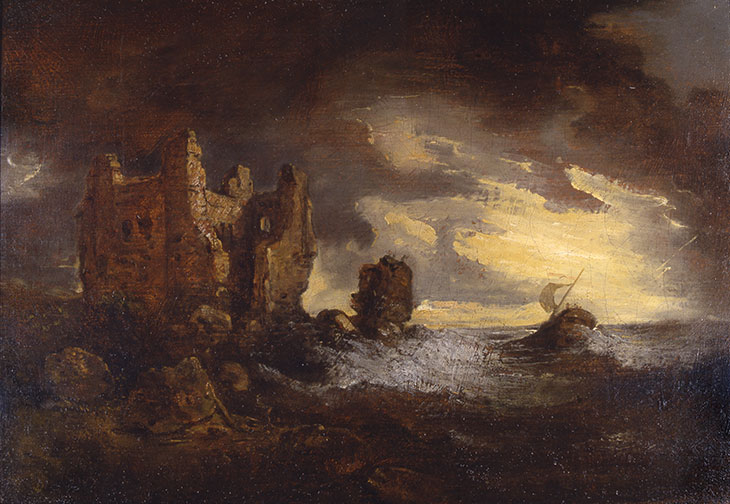
Peele Castle in a Storm (1805), George Howland Beaumont. Wordsworth Trust, Grasmere
But of course this is not to deny the intense sheer visuality of many passages in Wordsworth, and for all his rude remarks about the tyranny of the visible, he prided himself on his observational powers, and rightly. Of an early couplet, ‘And fronting the bright west, yon oak entwines / Its darkening boughs and leaves in stronger lines’, he said, in old age, that he could remember the very spot on the road from Hawkshead to Ambleside at which he’d seen the effect, which is nothing if not painterly: ‘The moment was important in my poetical history; for I date from it my consciousness of the infinite variety of natural appearances which had been unnoticed by the poets of any age or country, so far as I was acquainted with them; and I made a resolution to supply in some degree the deficiency.’ Coleridge praised his friend for writing in such a way as to somehow render anew ‘forms, incidents, and situations, of which, for the common view, custom had bedimmed all the lustre, had dried up the sparkle and the dew drops’, which (though Coleridge could not have known it) really does make him sound like Constable, who spoke of ‘my “dews” – my “breezes” – my bloom and my freshness’. When the young Hazlitt visited him, as he later remembered, Wordsworth pointed out a light effect: ‘How beautifully the sun sets on that yellow bank!’; and, says Hazlitt, ‘I thought within myself, “With what eyes these poets see nature!” and ever after, when I saw the sun-set stream upon the objects facing it, conceived I had made a discovery, or thanked Mr. Wordsworth for having made one for me!’ Wordsworth poems repeatedly turn about the act of looking at something – ‘Ten thousand saw I at a glance’; ‘Behold her, single in the field, / Yon solitary Highland Lass!’ – and in this aspect of his genius, Wordsworth’s ambivalent feelings about painting didn’t prevent him exerting an unostentatious but quite possibly decisive influence on 19th-century thinking about the visual world. It was a passage from The Excursion that Ruskin quoted as epigraph to each of the volumes of Modern Painters, a work that more than any other formed the Victorian eye, and it was a Wordsworthian spirit that, especially in the early volumes, moved Ruskin to the belief that ‘to see clearly is poetry, prophecy, and religion, – all in one’.
From the April 2020 issue of Apollo. Preview and subscribe here.
Unlimited access from just $16 every 3 months
Subscribe to get unlimited and exclusive access to the top art stories, interviews and exhibition reviews.


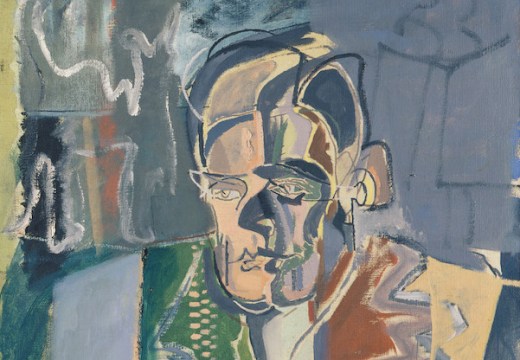
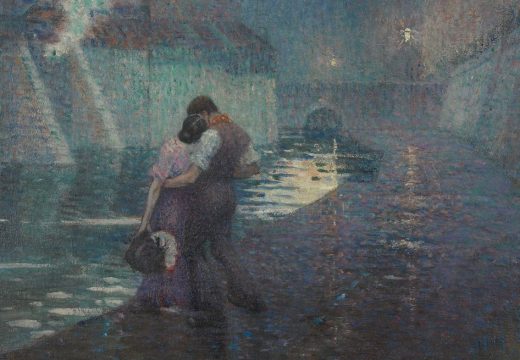
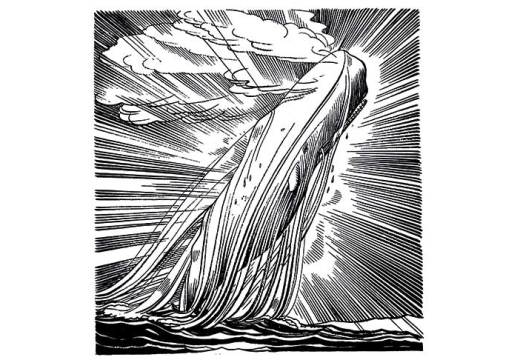









![Masterpiece [Re]discovery 2022. Photo: Ben Fisher Photography, courtesy of Masterpiece London](http://www.apollo-magazine.com/wp-content/uploads/2022/07/MPL2022_4263.jpg)
Suzanne Treister’s tarot offers humanity a new toolbox